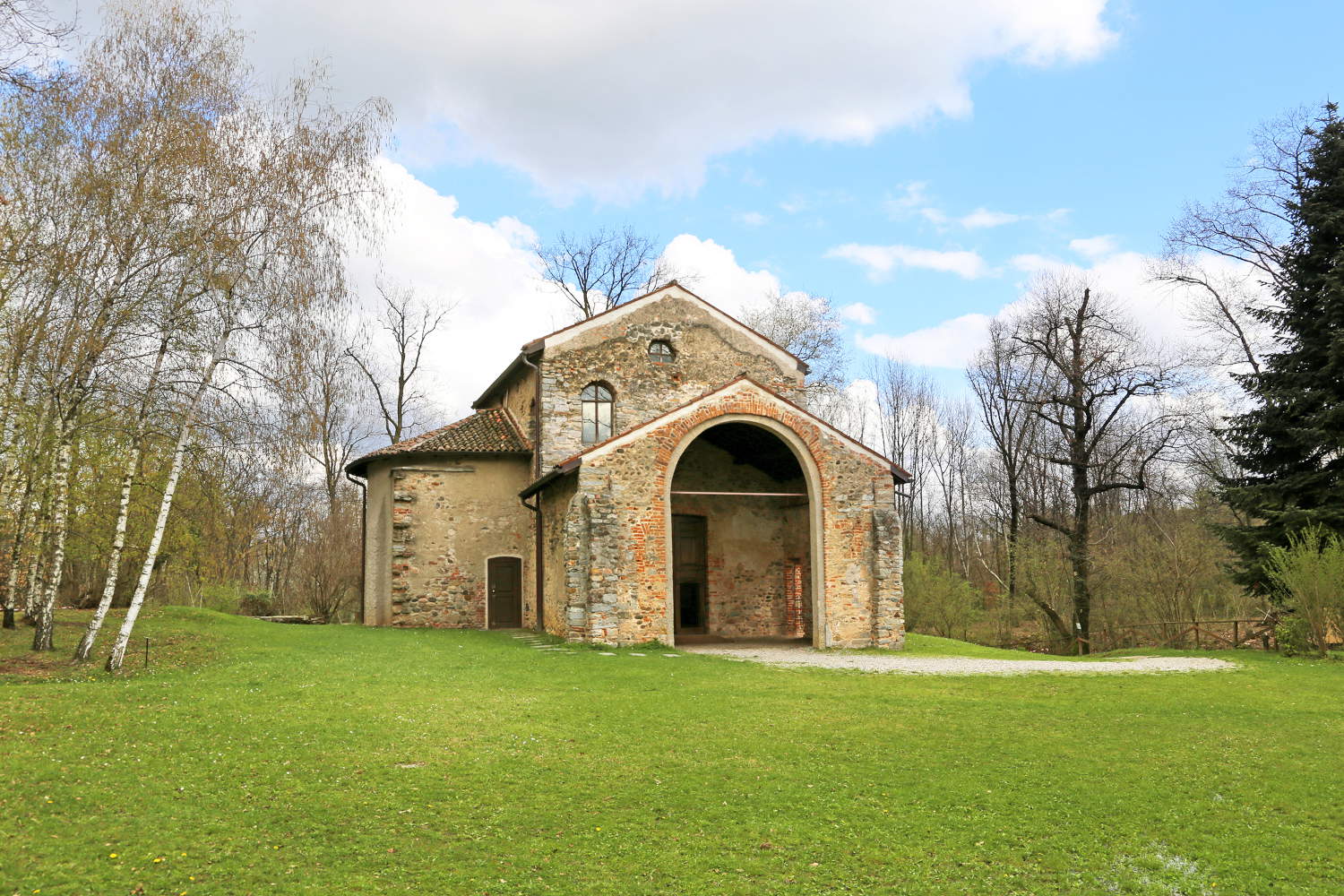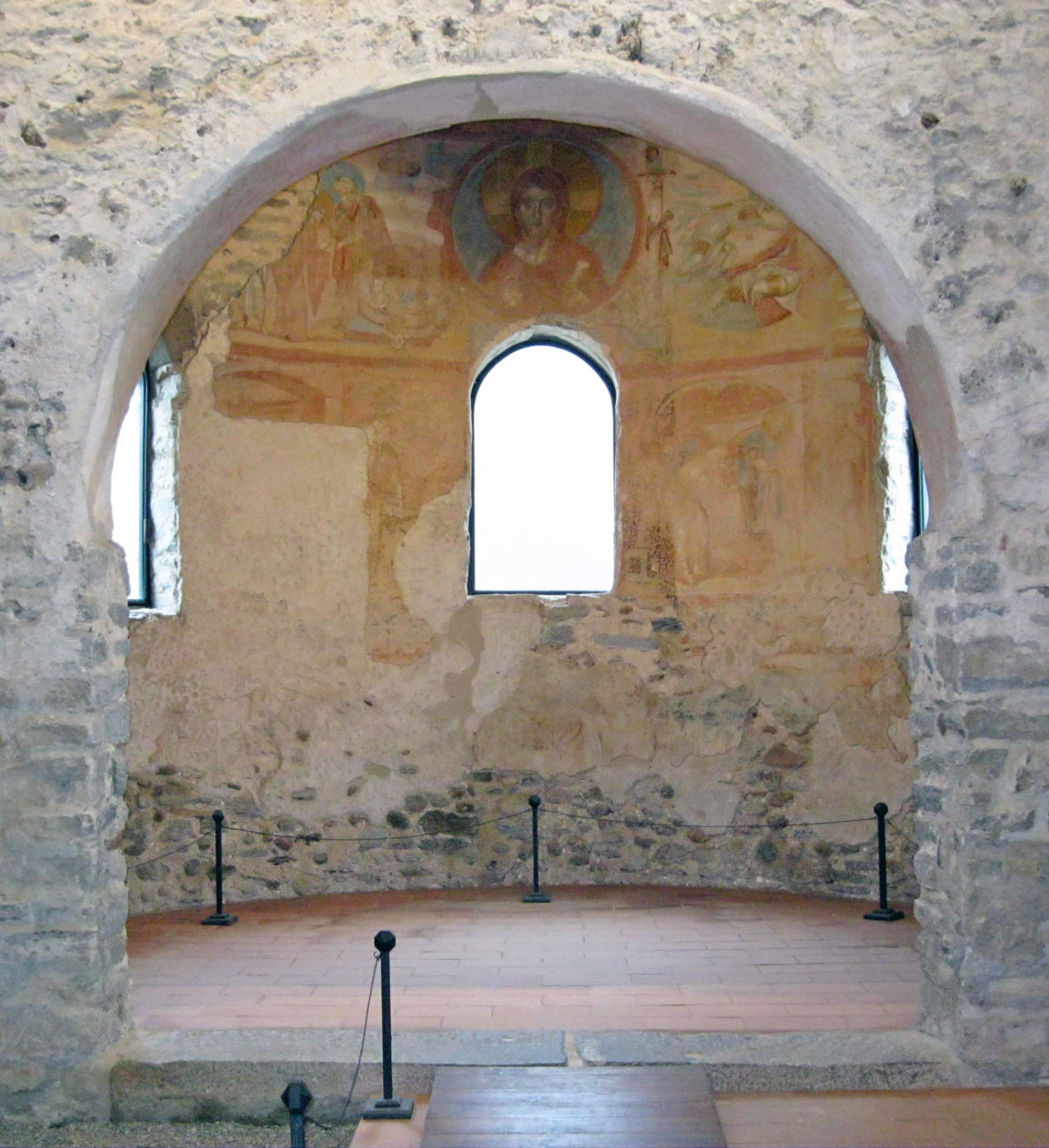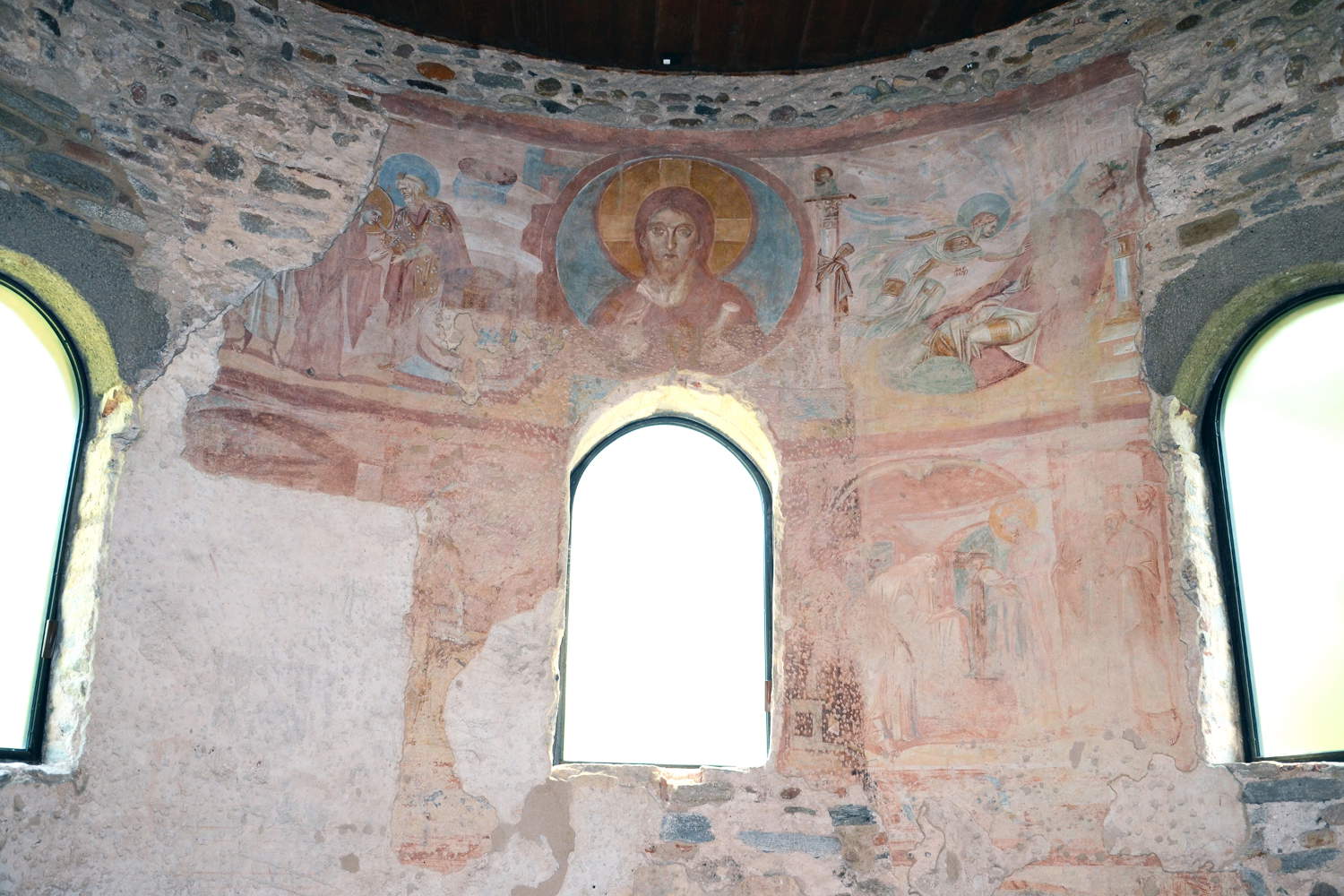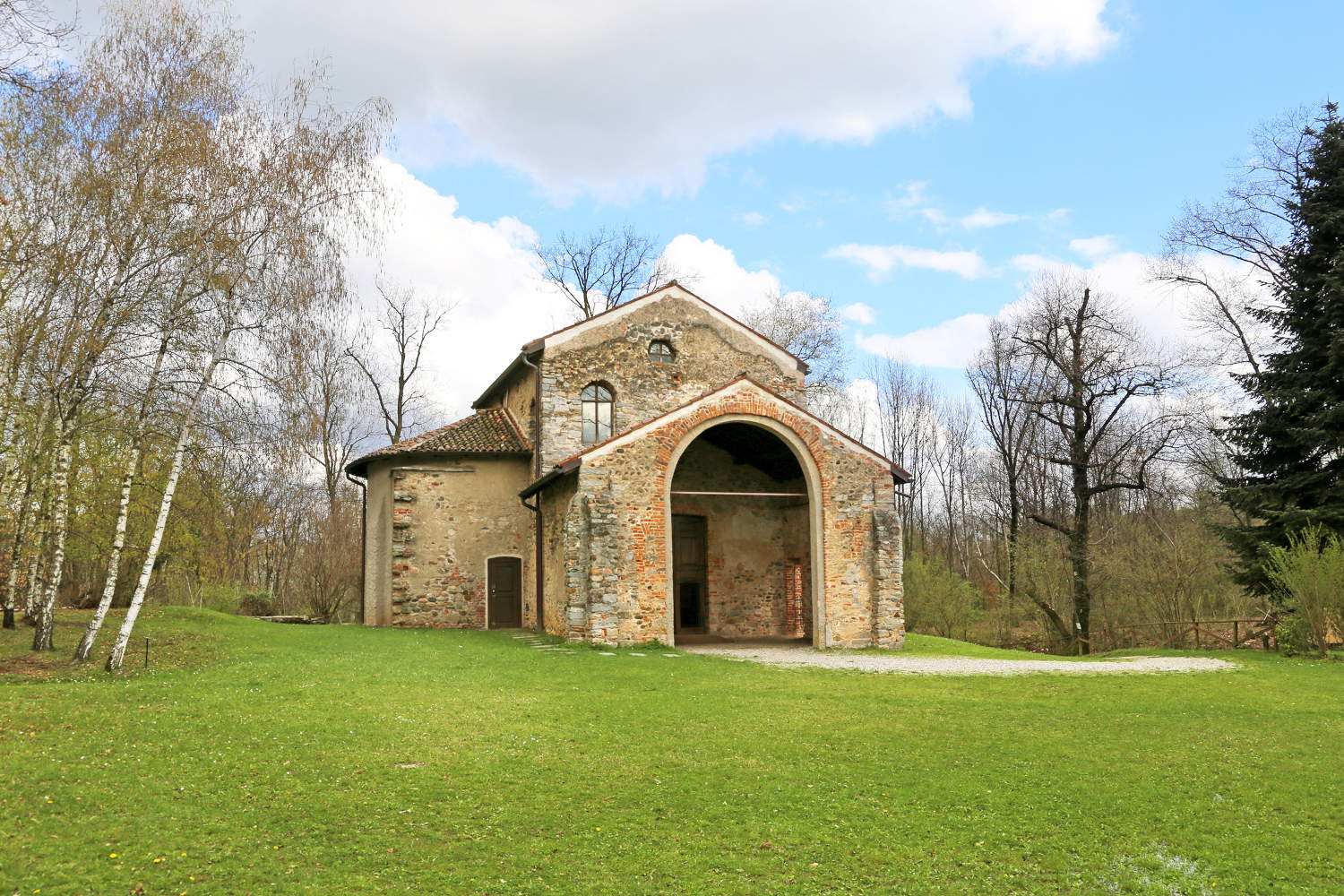Thanks to Intesa Sanpaolo at the start of maintenance work on the frescoes of Santa Maria foris portas
Work has begun on the monitoring and maintenance of the fresco cycle in the apse of the church of Santa Maria foris portas in the Castelseprio Archaeological Park near Varese. The work will be carried out by restorer Luigi Parma (Milan, Italy) and will last until next spring, without, however, closing the site to the public, who will have the opportunity to witness the work-scheduled to cause as little disturbance as possible-during the church’s opening hours. The work is supported by Intesa Sanpaolo as part of Restituzioni, the two-year program of restorations of works of art belonging to Italy’s cultural heritage.
The intervention will allow a complete mapping of the frescoes’ state of conservation, dusting and dry cleaning, acting with injections of natural hydraulic mortar where plaster detachments were detected.
The fresco cycle is of relevant importance for the study ofmedieval Lombard pictorial art. It depicts scenes from the infancy of Christ with episodes from the apocryphal Gospels that are also quite rare. The narrative unfolds on two overlapping registers, preserved only in part. The narrative begins, at the upper left, with theAnnunciation and continues with the Visitation and the Proof of the Bitter Waters, when according to sources Mary sipped a mysterious drink to publicly attest to her virginity. The author, possibly a native of Constantinople since the names of the characters are given in Greek characters, remains unknown to this day, and his manner of painting, characterized by strong ties to classical painting, is original and has very few comparisons. Given this absence of references, there is currently no agreement among scholars on the date of execution of the frescoes. There are three main hypotheses: the late antique age (6th century), when following the Greco-Gothic war the peninsula was conquered by the Byzantines; the Lombard age (7th century) when, in order to counter the Arian heresy that denied the divine nature of Christ, the miraculous stories related to his conception were reaffirmed; and the 9th century, in the context of the opposition between the Eastern Church and the papacy over the worship directed at sacred images.
The last major restoration work on the fresco cycle, discovered in 1944 by Lombard historian and archaeologist Gian Piero Bognetti, dates back to the early 1990s and was carried out by Lombard restorer Pinin Brambilla.
“The intervention is part of the extensive program of protection, study and research activities undertaken by the Castelseprio Park on behalf of the Lombardy National Museums Regional Directorate,” said Archaeological Park Director Stefano Aiello. “I would like to thank the generosity of Intesa Sanpaolo for the support given to the intervention and its inclusion in the Restitutions project. I would also like to thank our previous director Emanuela Daffra and our current director Rosario Maria Anzalone for their commitment in initiating this project. Finally, I would also like to thank the director of works Flora Berizzi, who will closely follow the intervention.”



 |
| Thanks to Intesa Sanpaolo at the start of maintenance work on the frescoes of Santa Maria foris portas |
Warning: the translation into English of the original Italian article was created using automatic tools. We undertake to review all articles, but we do not guarantee the total absence of inaccuracies in the translation due to the program. You can find the original by clicking on the ITA button. If you find any mistake,please contact us.



























